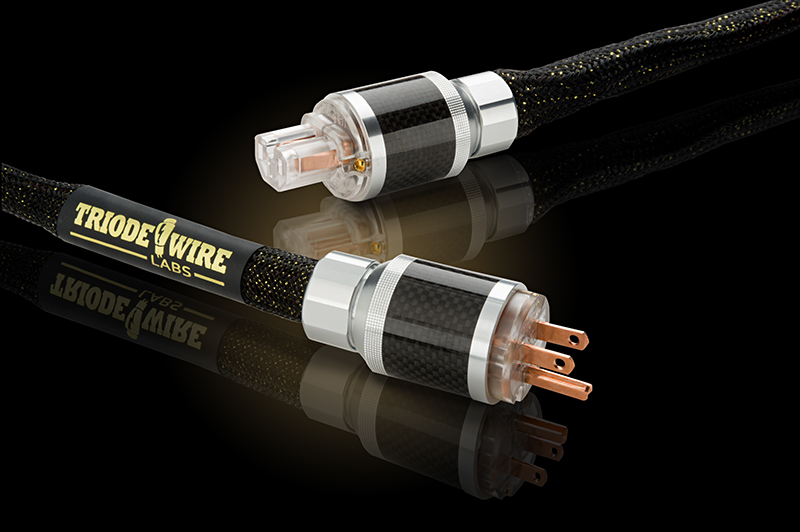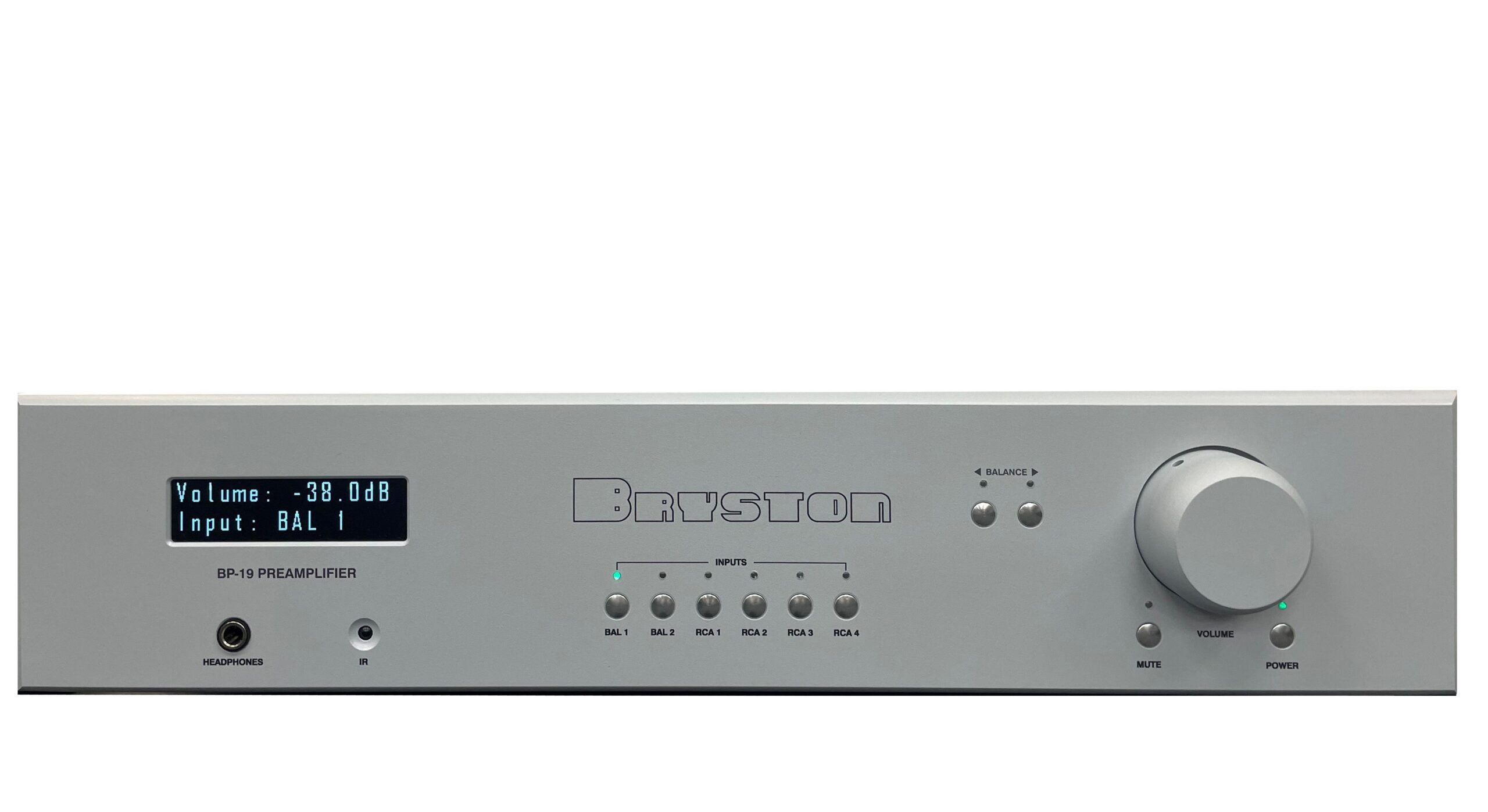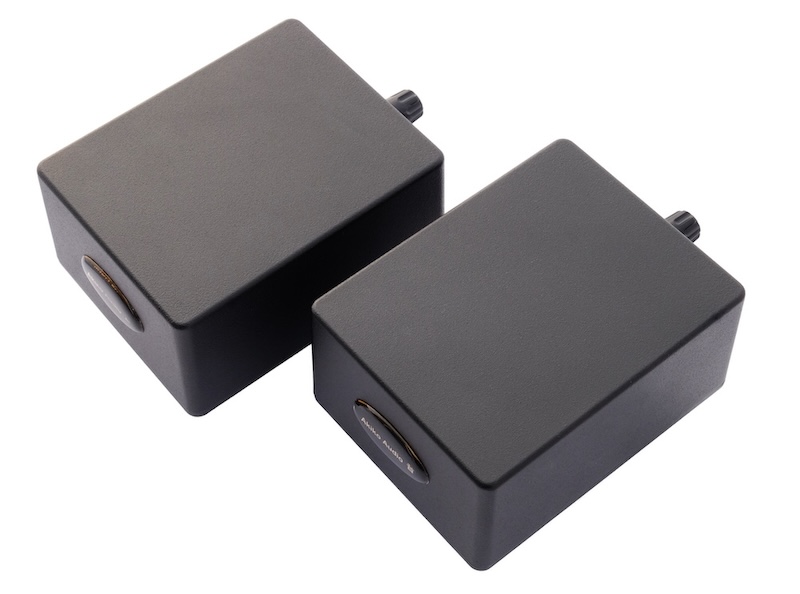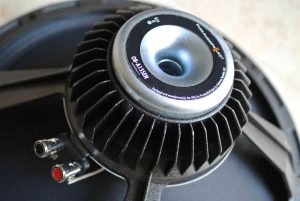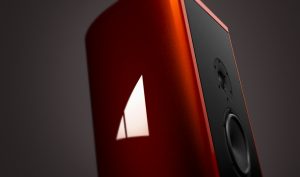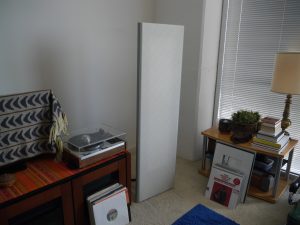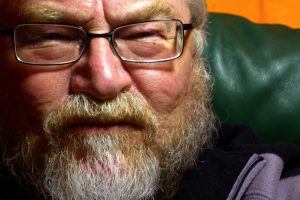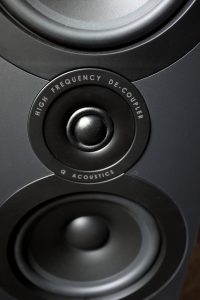How many rabbits can a magician pull out of the same hat? In the case of Bobby Palkovich, the wizard of Hemlock, it does seem like there is no limit. Just like Merlin, the wizard of old, who was said to have powerful magic, and for whom this speaker company is named. Bobby continues to amaze his fans and confound his sceptics with his ability to continuously squeeze out ever better performance from almost the same basic speaker cabinets that he uses for the two speaker models he offers.
Most speaker manufacturers have a tendency to opt for drastically new designs in newer models in their quest to dazzle audiophiles and hopefully gain their patronage. In contrast, Bobby has gone the route of the Porsche 911, which is one of the most revered classics in the world of automobiles. The basic design of the 911 has essentially stayed the same down through the ages, but with each iteration the level of performance has always managed to reach significant new heights. With the two models that Bobby offers, the TSM bookshelf and the VSM floor stander, the outward appearance has remained mostly the same over the past couple of decades. However, with each and every iteration the performance has risen so exponentially that they sound like completely different speakers when compared to their predecessors.
The subject of this review is the latest iteration of the TSM, which is the Black Magic studio black version with standard RCs. It is also available in a premium automobile finish in different colours and with Master RCs (Duelund Capacitors) at extra cost. Bobby has stuck with more or less the same cabinets as before, but almost everything else has been changed, which has helped this model evolve into a very special mini monitor indeed.
To begin with, Bobby has employed a matched pair of Morel 164 pulp cone woofers with 3-inch voice coils. The cone of this driver is coated in-house with a specially formulated Mueller coating, which adds mass and damps out of band resonance. This measure has reduced resonance while extending the lower bandwidth and enhancing clarity. The Black Magic TSM features a matched pair of silk dome tweeters, the Renaissance 30.5. This tweeter is a refinement of the Morel MDT 30, which it replaced, in that it is damped and vented to reduce dynamic compression. The internal volume of the rear chamber cup has been increased to extend its bandwidth. This cup has a more rounded profile to minimize standing waves. All of these improvements allow for a more cohesive transition from the woofer to the tweeter at the crossover point. Before installation, Bobby mills the tweeter face plates to recess the screw heads and then sprays on a textured coating to reduce diffraction and damp the plate.
Over the recent past, many speaker manufacturers have experimented with exotic materials for tweeters. These include aluminium, beryllium, diamond, ceramic and titanium. All these materials have their advantages but many of them require steep filters to tame their response, the ones that are not so well implemented, have a depression in the mid-range that compresses perspective while negatively impacting tonal balance and focus to deliver sound with a fair amount of colouration. This results in a sound stage where you can easily detect that the sound is emanating from the speakers rather than from all points on the sound stage, which is what happens when a well-designed speaker “disappears.” Some of the best-known speaker brands have realized this downside and so have reverted to silk dome tweeters for all their more recent models. I was glad to see that Merlin Music never took that route and stuck with the tried and tested silk dome tweeters.
Both, the woofer and tweeter were chosen partly because of their superior self-damping characteristics, which allowed Bobby to avoid using steep filters, which are known to generate excessive colouration, phase anomalies and dynamic compression.
Bobby has stuck with the excellent Cardas binding posts with copper connecting rods. These have been cleverly designed to achieve better contact while preventing over tightening. Bobby now treats these with a conditioner to resist oxidization and to fill in the minute imperfections on the connectors' surface achieving superior contact and signal transfer for a more full bodied and cohesive presentation.
If you have been following Bobby’s progression over the past decade you will recall his move to eliminate lead from his products by changing the solder he uses. For the Black Magic versions Bobby has changed the solder again. He now uses a eutectic, lower tin, silver formulation developed by Cardas. He claims, this reduces the nasality and metallic harshness in and around the lower treble (2 kHz) region. The goal of this change was to give the sound a more extended and smoother top end, generate a wider bandwidth so that the speakers sound bigger and more room filling.
The crossover filter network is second-order. It is crossed at 2,150 Hz and is designed to let the drivers play in electrical phase. These drivers, in congress with the crossover, naturally turn phase just enough to negate the mid-range bump that is usually generated with this type design. The crossover has been impedance corrected to shape the high frequency amplitude while providing a more benign load for the amplifier. The networks are also “Q” circuited to minimize ringing. The Hovland Musicaps have been replaced with capacitors from Uptone Audio. These are film/foil and are treated with crogenics to make the sound meatier. The inductors have been hand wound to a tolerance of plus or minus .001%. The film resistors used are non-inductive and resonance-free to make the high frequencies more extended. Listening tests at the factory indicated a significantly wider bandwidth, beefier bass and a more effortless rendition of the music. It has relaxed the mid-range further back so as to integrate it better with the treble and bass for greater transparency, a more cohesive, coherent whole and a more seamless top to bottom sound.
Heated debates are ubiquitous in many audiophile forums about the wisdom of using more expensive speaker cables. The rationale is that the use of ordinary wiring inside the speaker negates the effect of the better speaker cables. This is not a concern with Merlin Speakers because Bobby uses a proprietary Cardas Clear Cable for all the internal wiring harnesses, jumpers and RC networks for his speakers.
Bobby has paid extra attention to minimizing cabinet resonance and distortion that could contribute to making the sound confused. This is more apparent when you listen to complex tracks particularly in choral renditions and philharmonic orchestral works. To this end, Bobby decided to make the TSM a sealed two-way monitor with an air suspension design. The benefits of this design are two-fold. The back pressure on the woofer cone helps keep the voice coil in the middle of the magnet so as to achieve a more benign impedance while also giving the speaker greater power handling. The sealed design also allows the TSM to generate deeper bass all the way down to 35 Hz, which is rare for a speaker with a cabinet of these modest dimensions.
The TSM cabinet is fabricated from a heavy and relatively inert hardwood composite. The front baffle, bottom and back panels at 1.5” are unusually thick. The sides and top are .75”. This helps create a rigid yet slightly compliant design. They are also braced and all internal surfaces are covered in a broadband damping material. Bobby has designed the crossover plate to be easily removed to help make repairs or upgrades quick and easy, The cabinet edges have been milled with a large radius to help reduce edge diffraction.
For those of you who care about technical specifications, the TSM delivers a frequency response of 55 Hz to 20 kHz plus or minus 2.5 dB and is down 10 dB at 35 Hz. The acoustic phase shift is less than 10 degrees. The impedance is 8 ohms (6.5 ohms minimum). The sensitivity is 87 dB 1W/1M (2.83V) and the power handling is 100 watts (program) with a recommended minimum of 20 watts. Its maximum output is 107 dB (peak). It measures 8 inches wide, 11.625 inches deep and 16 inches high and weighs 26 pounds each. They are packed in a single carton that weighs 63 pounds, and come with a 5 years parts and labour warranty.
For the purpose of this review, I tried the Black Magic TSMs with various (solid state and tube) amplifiers and cables. They sounded the best with the Pass Labs XA100.8 mono-blocks and with Skogrand Beethoven cables and interconnects, so that is the configuration that I used for this review. The TSMs were perched on a pair of Sanus 26” stands that are filled with pure silica sand. Tiny amounts of Blu-tack was used to better couple the speakers to the stands. The speakers were placed using the Cardas method and were levelled and angled in using the wooden alignment tool provided by Merlin Music. Since 30 hours were already put on the speakers before they were delivered by Bobby himself, I put in another 70 hours before starting the review.
I began the review with Ana Caram’s “Viola for de Moda,” a Chesky Recording on Redbook CD. This track has more subtleties, nuances, delicate percussion renditions and voice presence than any track I have heard from my 72,000-track library. I have heard this track on dozens of speakers and even some of the exorbitantly priced models were not able to reproduce all the inner details with as high a degree of verisimilitude. Not so with the Black Magic TSM. It delivered this track with not just all the nuances and subtleties intact, but also with a sense of ease that make it truly enjoyable to listen to. The multitude of percussion instruments came through with a level of clarity that amazed me. There was an incredible air around each instrument and the sheer coherence was truly breathtaking. Ana’s incredible voice has the presence of a flesh, blood and bones body delivering it. There was nary a hint of the boxy nature of sound that one usually hears from many sealed enclosure bookshelf speakers.
Next up was Jazz at the Pawnshop, which is generally regarded as one of the best live jazz albums of all time. I played “In a mellow tone”, switched off the lights and found myself feeling like I was transported to the intimate Stampen Jazz Club in Sweden on December 6th, 1976, where Gert Palmcrantz recorded this tour de force performance. I was sonically surrounded by the murmur of the crowd, the soft tinkling of crockery and cutlery and the applause of the crowd that seemed so real, all that was missing was a cold libation in my hand. Through the TSMs, Arne Domnerus’ performance on the sax gave me goose bumps. These speakers offered such a transparent window into the performance I was actually able to detect that the microphones were placed so that they would pick up sounds directly from the instruments and from the amplification of the same. On the “In a Mellow Tone” track, I could hear the electric amplification of the acoustic bass along with the sound from the instrument itself because of the slight distortion that occurred because of this.
It was then time to see how the TSMs would handle Handel’s masterpiece “Messiah” as performed by the Swedish Radio Symphony Orchestra with the Bach Choir conducted by Anders Ohrwall. This is an extraordinary recording on XRCD in 20-bit K2 mode. The soprano on this recording is Yvonne Kenny and the countertenor and tenor parts sung by Paul Esswood and Martin Hill respectively. I have heard this composition performed live many times and have always wondered when I would encounter a speaker that would be able to reproduce it without merging the various voices in the choir, which detracts from the beauty of the performance. Although the TSM’s reproduction was not on the same level as a live performance, it came closer than any bookshelf speaker I have heard at any price. I have never enjoyed Messiah this much from any bookshelf speaker. Heck, I have heard many five-figure-priced full range floor standing speakers that did not reproduce Messiah as well as the TSMs. The TSMs are equally adept at reproducing male vocals. I put on Greg Brown’s “Flat Stuff” and revelled in the gritty, gravelly voice of this incredible singer belting out this superb track.
I then played “Poem of Chinese Drum” by Yim Hok-Man, which is when my chin hit the floor. The Achilles heel of most bookshelf speakers is their inability to create enough of a bass foundation on which the rest of the music can ride. The TSM is not designed to reproduce frequencies below 35 Hz, but the authority and tunefulness with which it delivers the 50 Hz to 100 Hz frequencies makes you feel like you are listening to a full range speaker with most music material. Unless you are partial to organ music, you are probably not going to miss the bottom octave all that much when listening to music through the TSMs. In any case, if the bottom octave is important to you, all you have to do is to mate the TSM to one or preferably two sub-woofers that are quick enough to keep up with these bookshelf speakers and you will have full range sound at a price that is probably going to be a lot less than if you invested in a true high-end, full range floor standing speaker.
I added two JL Audio F112 subs to the TSMs and played Lindenkirche Berlin by Gerhard Oppelt, which has oodles of deep organ notes from the bottom octave. The resultant sound was as good as what I have heard from some über expensive floor standing speakers. The caveat here is that you have to choose your subs carefully, place them in a manner to minimize room modes and then configure them so that they blend seamlessly with the TSMs and you will enjoy full range sound of the highest order.
The areas where the TSM is significantly better than most of the other bookshelf speakers in its price range are the width, depth, holographic nature of its sound stage, the relaxed nature of the sound delivery, the continuous nature across the audible frequency spectrum, the dynamic contrast even at relatively high volume levels and tonal accuracy. In fact from 50Hz and above, if there is a better all-round bookshelf speaker at this price, I have not yet heard it.
I pride myself on choosing reference gear that is extraordinarily neutral so that I can hear the differences made by any component that is inserted into the audio chain. The TSMs were so utterly neutral, it was surprisingly easy to hear past all the gear to gauge the recording quality of each track. In fact during my review of the TSMs, I found it difficult to keep my focus on the performance of these transducers because my focus kept wandering to analyzing the quality of the recording and the nature of the recording venue of each track I heard.
The TSMs give you such a transparent window into your upstream components, it is important that they also be as neutral as possible because if they are not, the TSMs will tell on them loud and clear. If you hear any hint of brightness, dullness, brittleness or harshness from the TSM, there is a very good chance that it is one of your upstream components or the quality of the recording that is doing the dirty deed.
If you are in the market for a bookshelf speaker in the $3,000 to $5,000 range and have a listening room that is less than 450 square feet, the Black Magic TSMs absolutely have to be on your shortlist. I will even go so far as to say that even if your budget stretches to $7,000 to $9,000, you would still be well advised to audition the Black Magic TSMs. The extra dollars that you save can then be used to invest in a pair of good sub-woofers to give yourself true full-range sound.
Price: USD $3080
Merlin Music
585.367.2390
[email protected]
www.merlinmusic.com
[Photographs by Rich Brkich, Signature Sound]






